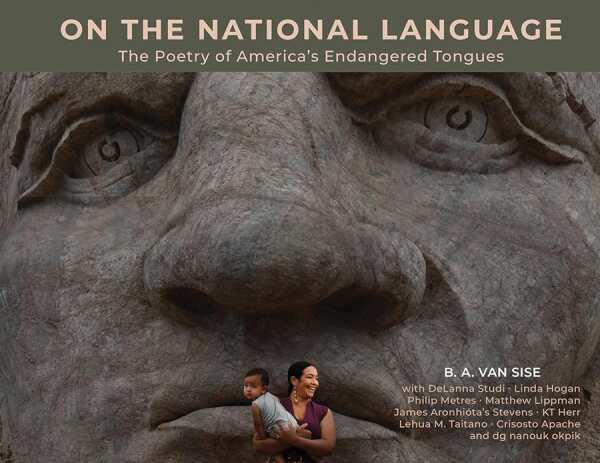On the National Language
The Poetry of America's Endangered Tongues
- 2024 INDIES Winner
- Gold, Multicultural (Adult Nonfiction)
In a dazzling interplay of words and images, B. A. Van Sise’s On the National Language conjures the richness of North America’s endangered languages, some of which are spoken by only a handful of elders. There are cultural summaries, representative words, and evocative photographs of the one hundred speakers, as well as poetry and bits of memoir.
Some examples are from diaspora communities, but most are Indigenous, revitalized after colonial censure and residential school policies. They survived after being “tucked up in corners, hidden under blankets, rolled up in tongues.” Van Sise describes an exciting cultural programming renaissance that’s reaching new speakers and some tricky linguistics detective work that resurrects languages that went generations without being spoken. The book shimmies from Alaskan Russian to South Californian Tongva to Georgia’s Afro-Seminole Creole, showcasing the diversity of amazing words and concepts among different traditions. And the accompanying portraits reflect cultural pride and evoke multiple meanings for the selected terms. Most striking is the shoreside portrait depicting et’uquitur (“he reached a deep spot in the water”) with a mighty whale fluke piercing the water just behind the Cup’ig speaker.
This creative and important collection of words you never knew you really needed is best summed up by the Bukhari word amonati—“something you hold and keep safe for someone else.”
Reviewed by
Rachel Jagareski
Disclosure: This article is not an endorsement, but a review. The publisher of this book provided free copies of the book to have their book reviewed by a professional reviewer. No fee was paid by the publisher for this review. Foreword Reviews only recommends books that we love. Foreword Magazine, Inc. is disclosing this in accordance with the Federal Trade Commission’s 16 CFR, Part 255.

